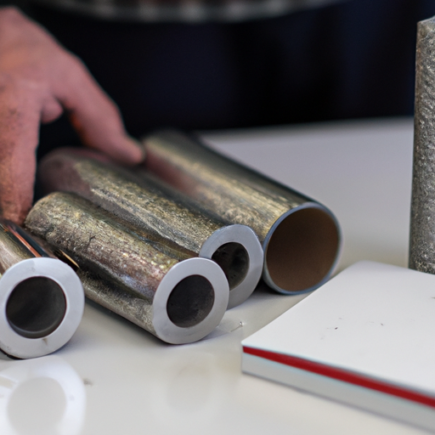When it comes to roof construction, there are several key components and processes that every homeowner should understand. A well-constructed roof is crucial for protecting the structure of a building and its occupants from the elements. In this article, we delve into the basics of roof construction, providing valuable information on roof structure, covering, insulation, ventilation, and maintenance. Understanding these aspects will help homeowners make informed decisions about their roofs, ensuring they are well-constructed and maintained for longevity. Whether it’s choosing between trusses and rafters, selecting the right roof covering for the climate and style, or ensuring proper insulation and ventilation, this article covers it all. Regular maintenance and prompt repairs are also emphasized to prevent further damage and maintain the roof’s integrity. Overall, gaining a thorough understanding of roof construction is essential for homeowners to make informed decisions and protect their homes.
Exploring Roof Construction: Materials, Techniques, and Considerations
When it comes to roof construction, the choice of materials is crucial for durability, energy efficiency, and aesthetics. This comprehensive guide explores various roofing materials, including asphalt shingles, known for their affordability and ease of installation; metal roofing, which offers exceptional durability and weather resistance; clay and concrete tiles, known for their timeless beauty and insulation properties; wood shakes and shingles, popular for their natural appearance but requiring regular maintenance; and synthetic roofing materials, offering improved durability with the look of traditional materials. The article also suggests considering factors such as climate, budget, architectural style, and maintenance requirements when choosing the right material for a successful roof construction project.
Exploring the Properties of Modern Materials
various environmental factors, such as temperature, pressure, and humidity, scientists can determine how they perform in real-world applications. This information is crucial in industries like construction and transportation, where materials need to withstand a wide range of conditions. Understanding the behavior of materials in extreme environments also helps in developing protective coatings and materials for applications in space exploration and renewable energy.
Furthermore, investigating the applications of advanced materials involves studying their potential uses in various fields. From healthcare to energy, materials with specific properties can greatly impact the effectiveness and efficiency of devices and systems. For example, the development of biocompatible materials has revolutionized medical implants and prosthetics, allowing for better integration with the human body. Similarly, the discovery of new materials with enhanced energy storage capabilities has led to advancements in batteries and renewable energy technologies.
Moreover, exploring the applications of advanced materials involves testing their performance in different manufacturing processes. By understanding how materials interact with production techniques like 3D printing or nanofabrication, scientists and engineers can optimize these processes to achieve desired results. This can lead to faster production, reduced waste, and improved overall manufacturing efficiency.
In conclusion, investigating the applications of advanced materials is essential for staying at the forefront of technological advancements. By exploring the unique properties, behaviors, and potential uses of these materials, scientists and researchers can contribute to numerous industries and pave the way for groundbreaking innovations. From aerospace and electronics to healthcare and energy, advanced materials have the potential to shape our future in countless ways.
The Importance of Material Selection in Engineering and Manufacturing Processes
improve efficiency. Different materials have different processing requirements, such as temperature, pressure, and molding techniques. By selecting materials that align with the manufacturing capabilities and limitations, engineers can streamline production, reduce costs, and maximize efficiency. For example, choosing materials that can be easily molded or have good machinability can significantly speed up the manufacturing process. Additionally, materials with good thermal conductivity or electrical conductivity can enhance energy efficiency in various applications.
Furthermore, material selection also has a significant impact on the environmental sustainability of a project. With growing concerns about climate change and resource scarcity, engineers and manufacturers need to prioritize materials that have minimal environmental impact. This can include choosing materials that are recyclable, biodegradable, or made from sustainable sources. By selecting eco-friendly materials, professionals can contribute to reducing carbon emissions, minimizing waste generation, and conserving natural resources.
Lastly, cost plays a crucial role in material selection. While high-performance materials often offer superior properties, they can also come with higher costs. Therefore, engineers need to find a balance between performance and budget constraints. By understanding the cost implications of different materials, professionals can make informed decisions that optimize both performance and cost-effectiveness. This may involve conducting cost-benefit analyses and considering factors such as maintenance requirements, lifespan, and potential savings in the long run.
In conclusion, material selection is a vital process in engineering and manufacturing. It directly affects the performance, efficiency, environmental impact, and cost of a project. By carefully considering the specific requirements, manufacturing capabilities, environmental implications, and budget constraints, engineers and manufacturers can make informed decisions that lead to the development of high-performing, efficient, sustainable, and cost-effective products.
Materials for the Future: Technologies and Trends
Materials science is a field that is constantly evolving and pushing the boundaries of what is possible. Advancements in technology and the need for sustainable solutions are driving research and development in materials. The future of materials is being shaped by the development of advanced composites, such as carbon fiber composites, which offer superior properties. Nanotechnology is also playing a major role in materials science, allowing for precise control over material properties and opening up new possibilities in electronics, medicine, and energy storage. The need for sustainable materials and manufacturing processes is driving the search for eco-friendly alternatives, including biodegradable materials and those made from renewable sources. The integration of materials with cutting-edge technologies, such as wearable technology and energy-efficient technologies, is revolutionizing multiple industries. The field of materials science is rapidly advancing and these trends are poised to shape industries and improve our lives in the future.
Innovations in Materials Science: Advancements and Applications
ideal for applications in aerospace, automotive, and sporting goods industries. Another area of innovation in materials science is the development of biomaterials. These materials are designed to interact with biological systems and have applications in healthcare, such as tissue engineering and drug delivery. Additionally, advancements in materials science have also led to the emergence of 3D printing, enabling the creation of complex structures and custom-made products. Overall, the latest breakthroughs in materials science hold the promise of transforming industries, improving existing technologies, and shaping the future.
Understanding the Different Types of Materials
Exploring the Basics: An Introduction to Materials offers a comprehensive introduction to the different types of materials, highlighting the importance of understanding them for students, scientists, and individuals curious about the world around them. The article categorizes materials into metals, polymers, and ceramics, discussing their properties and applications. It emphasizes the atomic and molecular structures, crystalline arrangements, and mechanical properties of materials that influence their behavior under different conditions. By understanding materials and their properties, engineers can design innovative products, scientists can conduct research, and consumers can make informed decisions about the products they use. Unraveling the Complexity: A Closer Look at Different Material Types delves deeper into the various material types, focusing on metals, polymers, ceramics, and composites. It describes their unique characteristics and compositions and emphasizes their roles in shaping our everyday lives, from clothes to buildings. The article showcases metals’ strength and conductivity, polymers’ large molecule structures, and ceramics’ hardness and heat resistance. It concludes by highlighting the importance of materials in our lives and the diversity and capabilities of the substances that surround us.
The Role of Materials in Sustainable Design
minimizing waste and reducing the need for new resource extraction. By using materials that have been recycled or repurposed, designers can help divert waste from landfills and conserve resources. This can include materials such as recycled plastic, reclaimed wood, or upcycled textiles. By incorporating these materials into their designs, designers can contribute to a circular economy where resources are reused and recycled in a continuous loop. Overall, the impact of materials in sustainable design cannot be overstated. By carefully considering the environmental, social, and economic aspects of materials, designers can make informed choices that contribute to a greener and more sustainable future.
Designing and Building a Mansard Roof: Tips and Considerations
and functionality of the roof. A steeper pitch angle allows for more usable space under the roof, while a shallower angle may be more aesthetically pleasing. Additionally, the choice of materials for the roof is crucial, as different materials have varying costs, durability, and aesthetic qualities. It is important to select materials that not only fit with the overall design vision but also meet the required maintenance needs. The design and placement of dormer windows are also important considerations, as they can enhance the architectural style of the mansard roof and provide natural light and ventilation to the interior space. Finally, it is essential to work with experienced professionals who specialize in roofing and construction, as they can provide valuable advice and guidance throughout the process. With careful planning and consideration of these key factors, homeowners can successfully design and build a beautiful and functional mansard roof that adds charm and character to their property.
Understanding the Mansard Roof: A Comprehensive Guide
or entertainment rooms. This can be particularly beneficial in urban areas where space is limited. Additionally, the steep slope of the mansard roof allows for effective water drainage, reducing the risk of leaks and water damage. Another advantage of the mansard roof is its versatility in terms of architectural style. Whether used in classical or contemporary designs, the mansard roof adds a touch of elegance and visual appeal. However, there are also some disadvantages to consider. The construction and maintenance of a mansard roof can be more costly compared to other roof styles. The intricate design and steep slopes may require additional structural support and regular maintenance to ensure its durability. Furthermore, the complex design may pose challenges when it comes to insulation and ventilation. Overall, while the mansard roof offers numerous advantages in terms of additional space and aesthetics, it is important to carefully consider the associated costs and potential maintenance requirements before opting for this design option.












